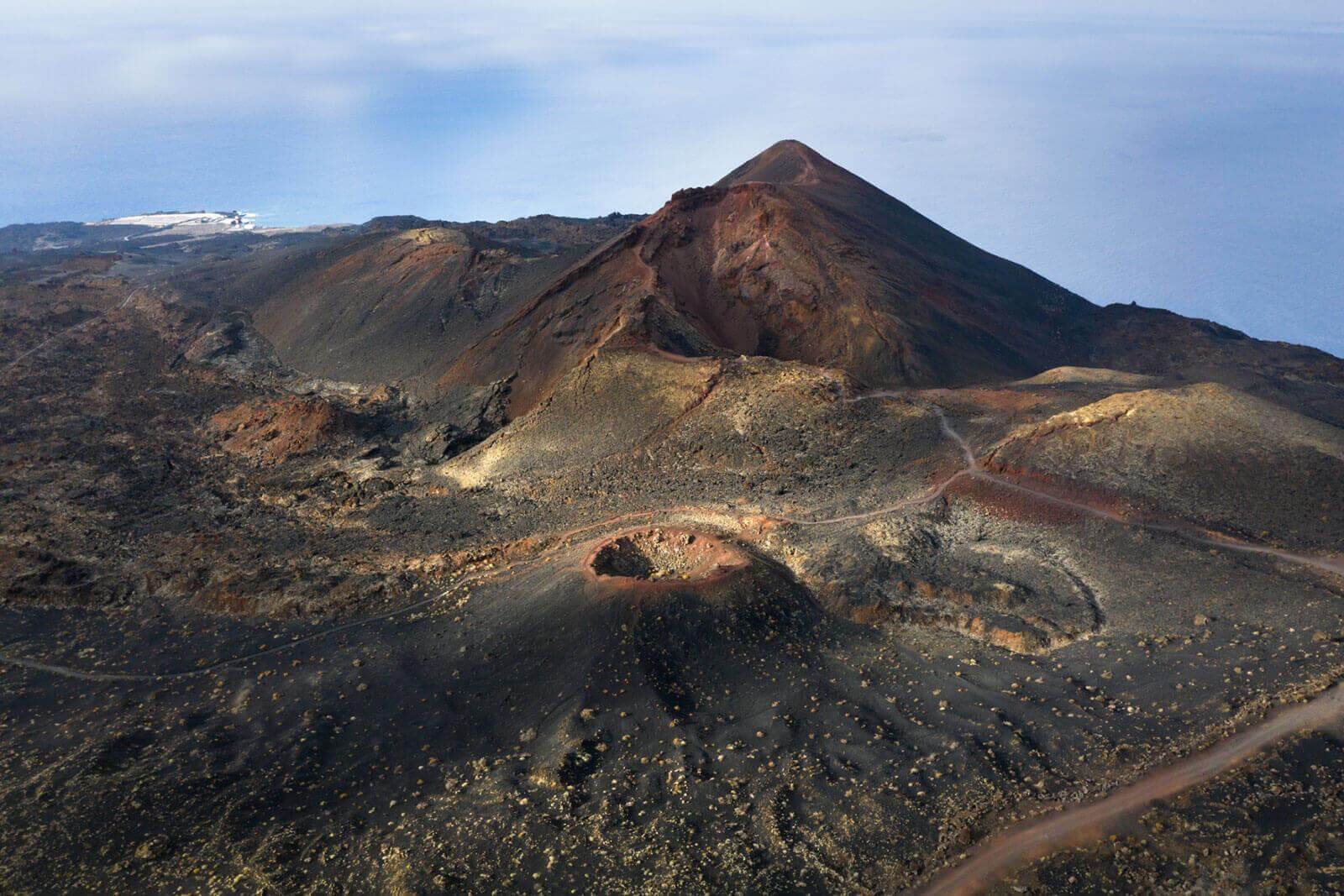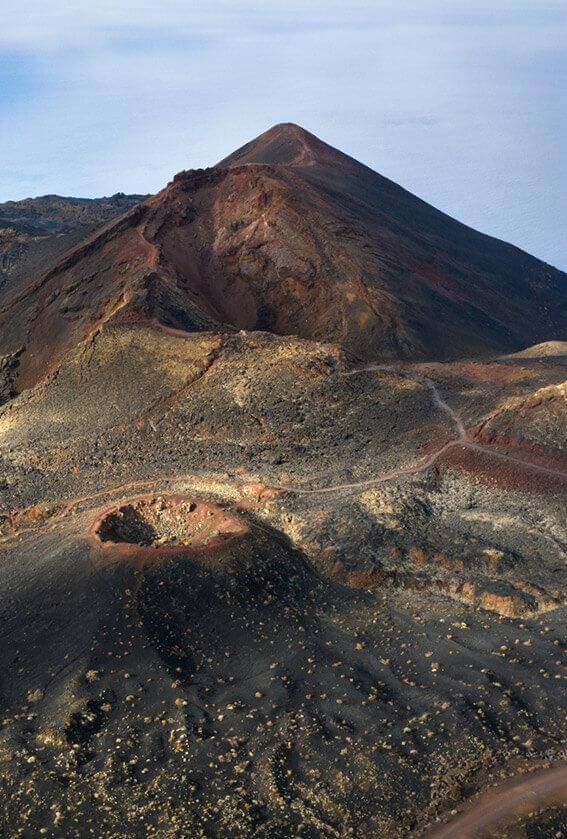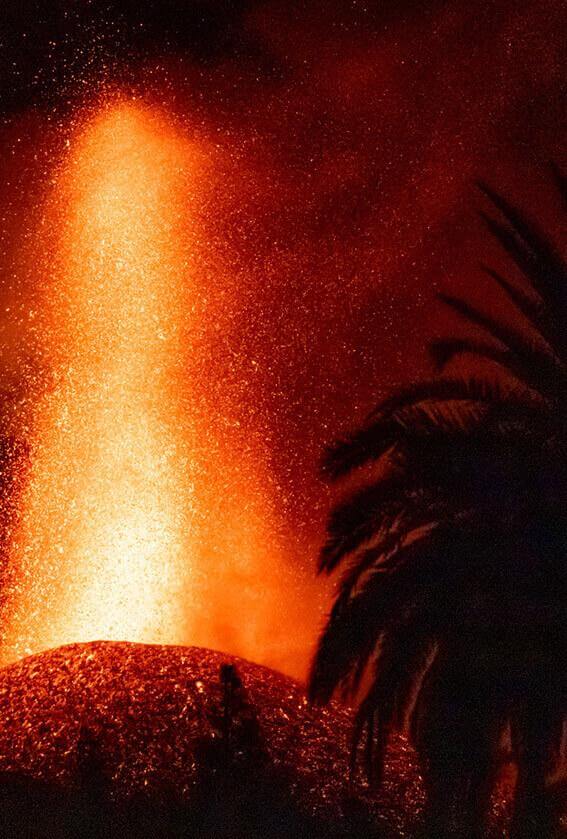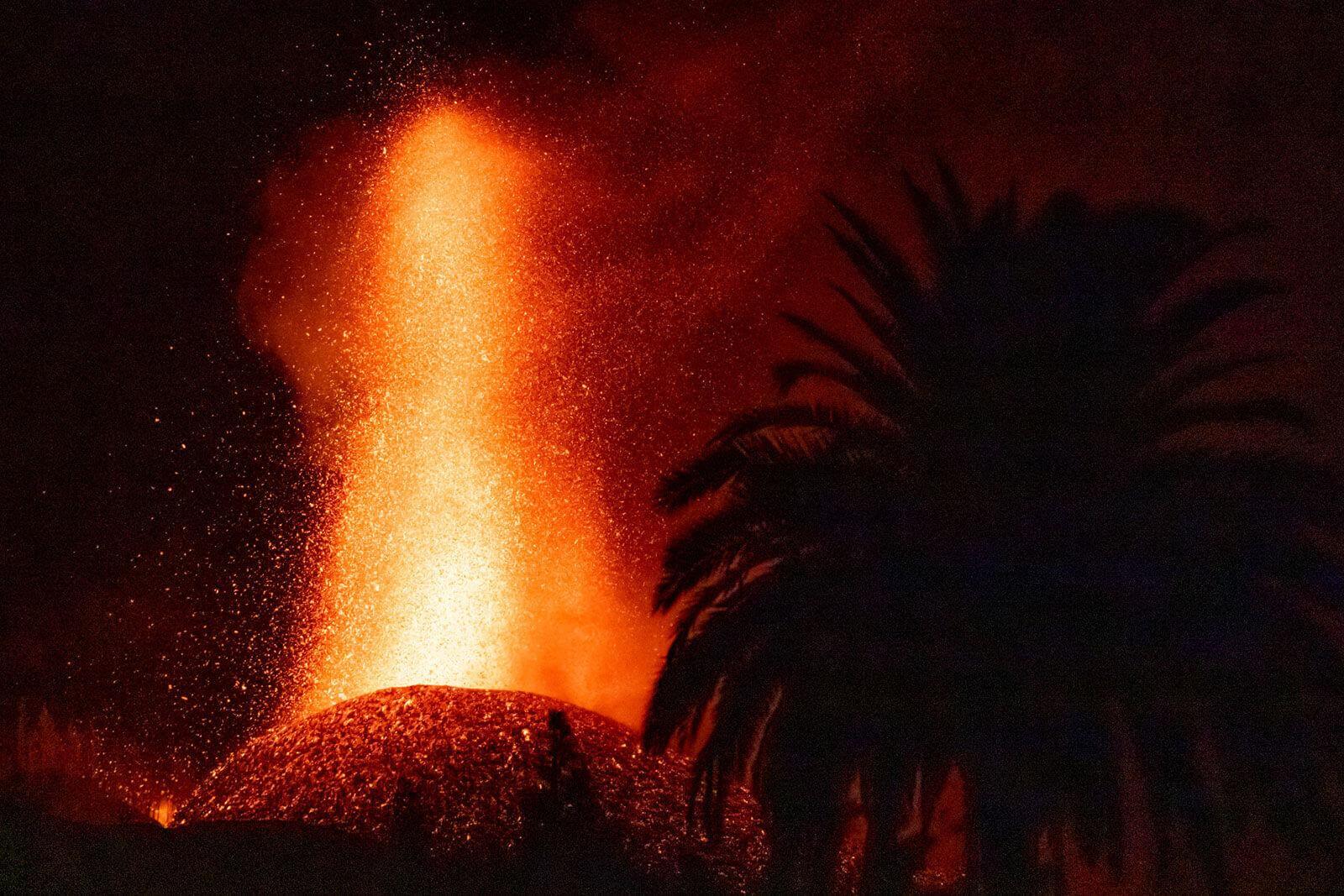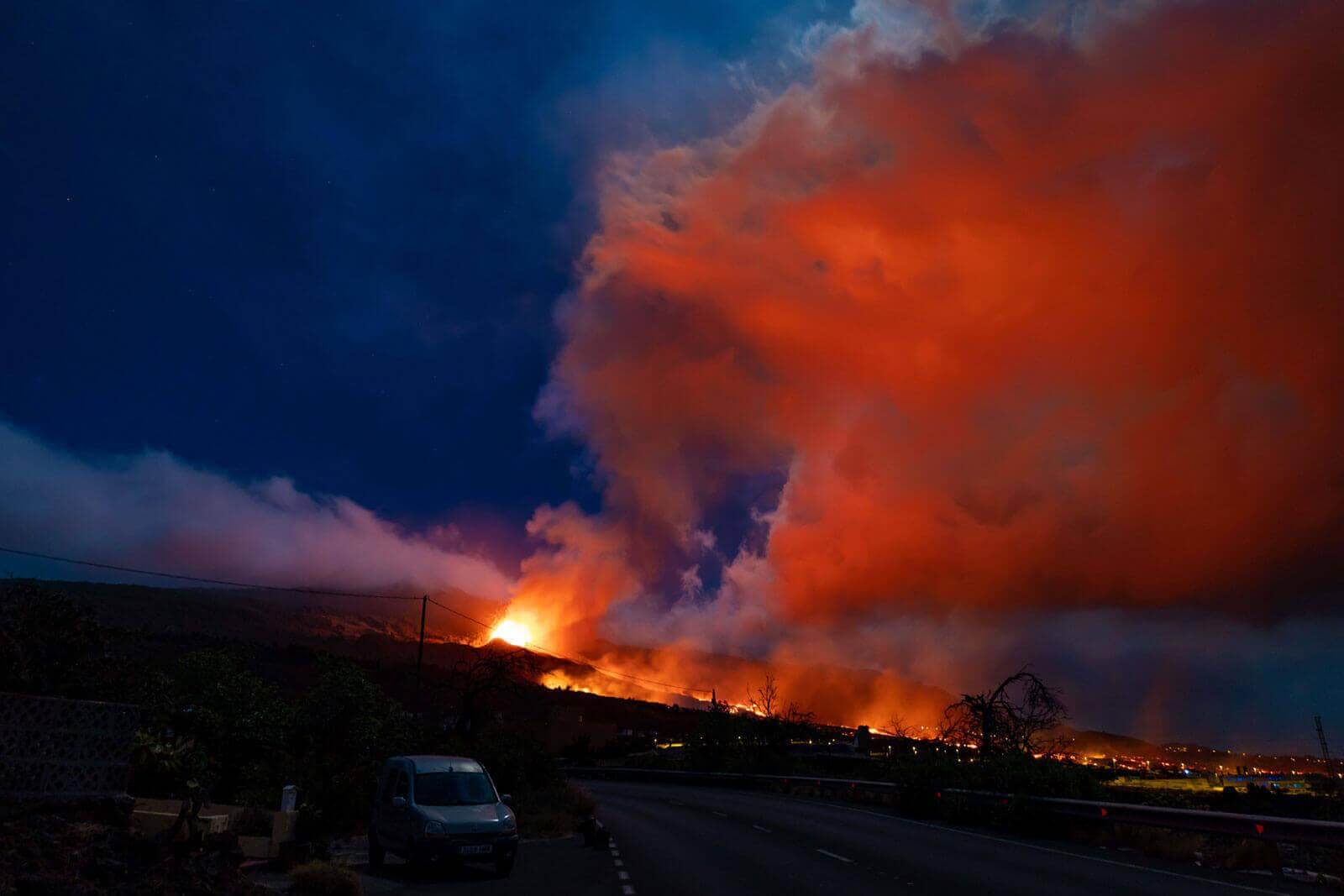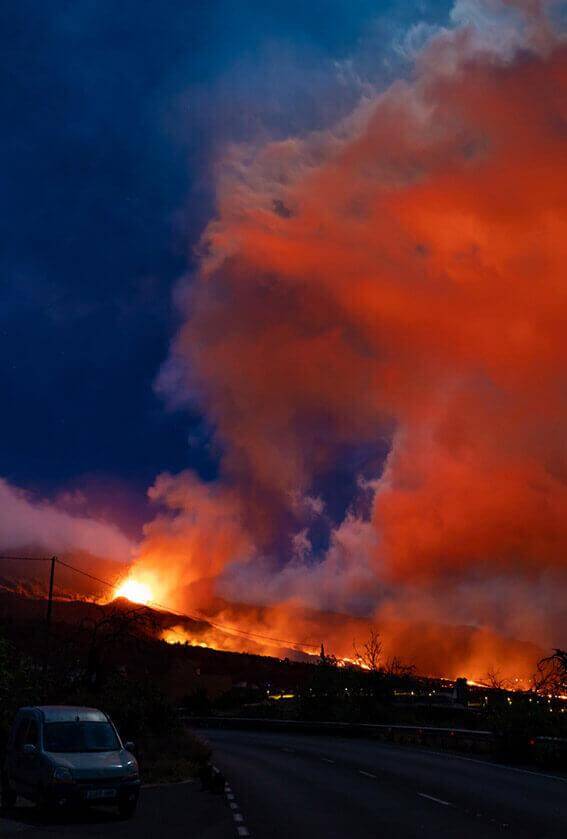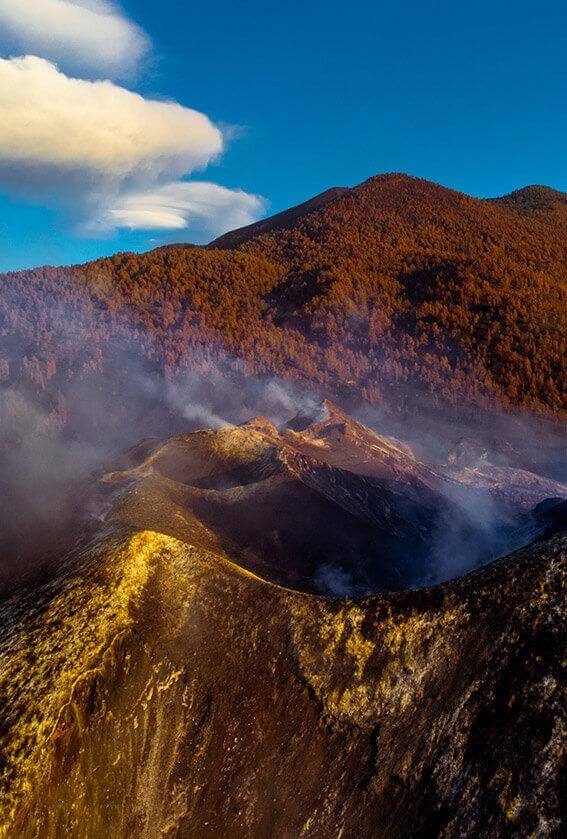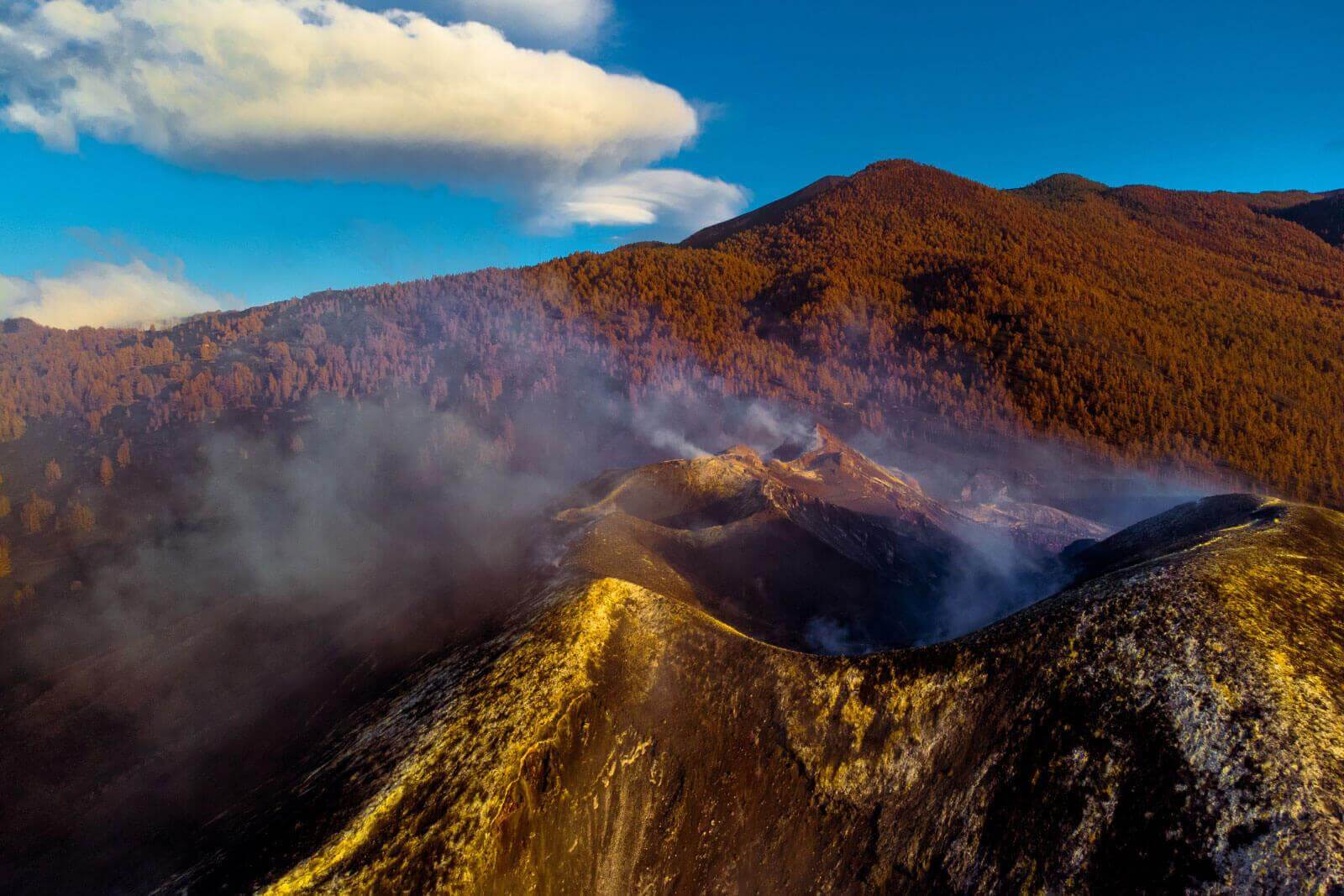An earthquake followed by a cracking sound, and finally, an explosion. This was how the residents of the Aridane Valley realised a new volcano had emerged from inside the Earth. A tremendous roar changed the history of La Palma and set its landscape, orography and the life of its inhabitants on a totally different course.
While surprising, this is nothing new. This phenomenon has been occurring for three million years, when the island rose up from the depths of the ocean, and has continued right up until the present. Actually, the previous eruption on the island took place 50 years ago. And this is why La Palma is known as the ‘Land of Volcanoes’.
The origin of La Palma and the archipelago of the Canary Islands
The Canary Islands owe their volcanic origin to their location, on the edge of the African continental shelf and the North Atlantic ocean crust. The first island to emerge was Fuerteventura, although they all rose up around 35 million years ago, during the Oligocene, due to the ascent of magma through the fractures that connect the interior of the planet with its surface.
The creation process is as simple as it is fascinating. Over the centuries, the lavas from the submarine eruptions have built up until they emerged above sea level, giving rise to different, extremely varied volcanoes on the surface. The process takes millions of years, and is actually ongoing, with mainly basaltic eruptions which result in small Strombolian volcanoes.
The significance of the volcanoes for the ancient indigenous peoples
According to the culture of the ancient indigenous Canarian peoples, a malignant entity threatened the Canary Islands. It was comparable to the devil and received the name of Guayota. The indigenous peoples related this figure to fire, volcanic processes and the devastation they left behind them. It lived inside the earth, especially in the Teide, which was seen as hell itself.
Up until the 20th century, in the Canary Islands it was frequent for new volcanoes to named after saints, as in the case of the volcano of San Antonio. However, over the past century it has become more common to use indigenous names typical of each island to baptise the volcanoes that emerge on them, such as the volcano of Teneguía. The eruption that took place in 2021 does not have an official name yet, although it is increasingly being called Tajogaite, the name of a place close to the area where the volcano emerged.
The effect of the eruption of the La Palma volcano
After the initial roar, the volcano began an eruption process during which a series of reactions took place that altered the day-to-day life of the Valley of Aridane and surrounding municipalities.
This eruption generated up to 286.2 terawatt hours (Twh) of energy, 1000 times the amount used by La Palma throughout the whole of the previous year. Meanwhile the lava spurting out from the main crater reached a height of 600 metres, and at times, the pyroclastic column came to exceed an altitude of 9000 metres.
Each minimal evolution of the volcano made for a high-impact change on the area of influence, especially in the immediate vicinity of the cone, close to the active lava flows and around them, due to the falling ash and pyroclasts. For the 85 days the eruption lasted, the entire island was in a state of constant change, awaiting the definitive outcome with the hope of embarking on a new phase marked by social and economic recovery and the re-emergence of the flora and biodiversity in a completely new natural habitat.
Our thanks to Dr. Juana Vegas Salamanca, Coordinator of the Heritage and Geodiversity Research Team at the Geological and Mining Institute of Spain (Spanish National Research Council) for her collaboration on the creation of this article.


